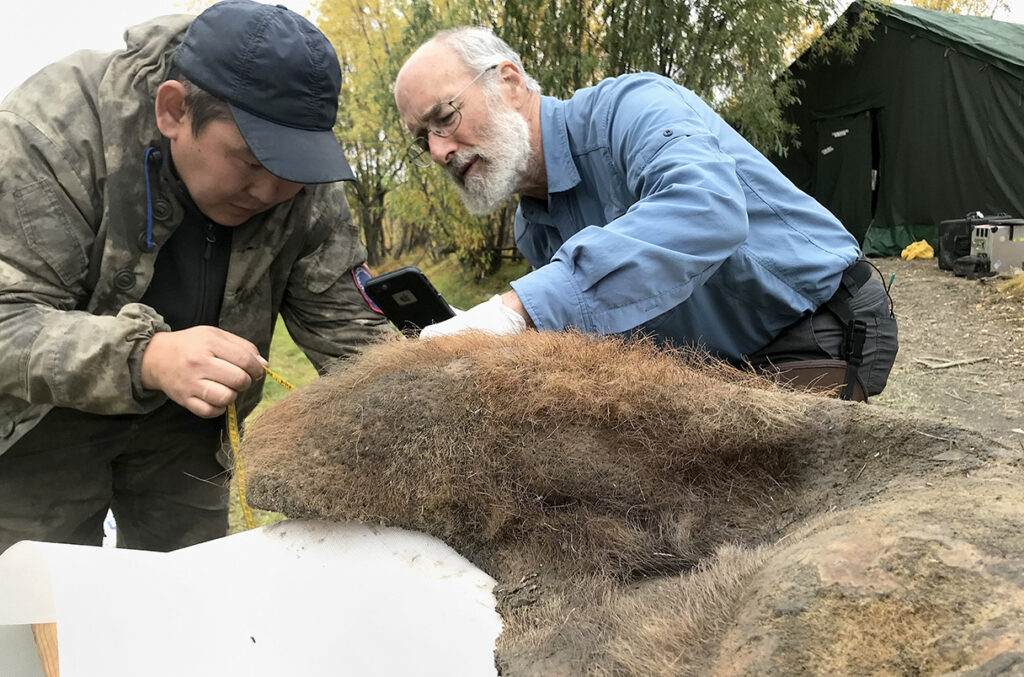The first sign that Erez Lieberman Aiden and his team were onto something special was the ice age beast’s hairdo. Woolly mammoth hides that froze, thawed, and refroze tend to go bald. But the mammoth that had perished some 52,000 years ago in Siberia had retained a tangle of chestnut-brown hair over much of its body, suggesting it had stayed frozen since the animal died.
The closer the scientists peered, the more wonders they beheld. A microscope revealed the mammoth’s hair follicles. Looking even closer, they saw loops of chromatin—the DNA and proteins that make up chromosomes—preserved in a glasslike state in which the molecules are packed tightly.
From that exquisite slab of skin, the researchers assembled the mammoth’s genome and the 3D architecture of its chromosomes. The structure closely resembles that of modern elephants and showed the genome in action, revealing clues to which genes were active in mammoth skin, as Aiden, director of the Center for Genome Architecture at Baylor College of Medicine (BCM), and colleagues report in the 11 July issue of Cell. “This is a fantastic result that has the potential to become a real milestone,” says Michael Hofreiter, an evolutionary geneticist at the University of Potsdam who was not involved in the study.
To Learn More Click Here



